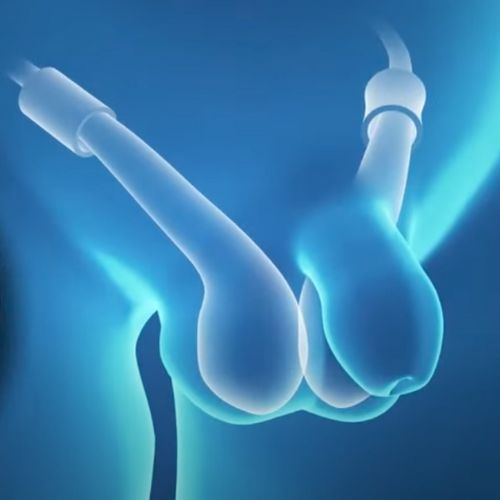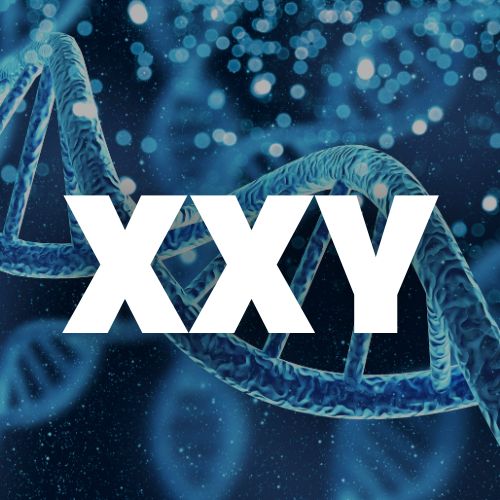Hypo means deficient or below. Gonadism means, well, something to do with gonads, a fancy name for reproductive organs. Hypogonadism is the medical term for what we average people would simply call low testosterone.
Low testosterone is problematic because it deals a body blow to the male’s very essence of masculinity. It crushes self-confidence and that is not even the worst part. Left untreated over the long term, low testosterone can have serious health effects. So what causes it? It’s important to establish its origins since that’s where all paths of treatment must begin.
Quick facts overview
Two types of causes of hypogonadism
Hypogonadism causes can be split into two main categories. It comes down to the nature and location of the biochemical processes that eventually culminate with the production of testosterone.
1. Primary causes
Also known as hypergonadotropic hypogonadism, Primary causes are what you would usually think of when you imagine a likely cause of low testosterone – a problem with the testes. The testes are after all where testosterone production occurs. This is why primary causes are also referred to as primary testicular failure. Let’s check out some of the more common primary causes.
Undescended testicles
In medical jargon, it’s called cryptorchidism. Relax, it has nothing to do with cryptocurrency. This condition occurs when a baby’s testicles fail to drop into the scrotum within the first couple of months after birth. For optimal testosterone production, the testes must be two or three degrees cooler than the body’s core.

Mumps orchitis
Orchitis is a testicular inflammation causing the testes to swell and be painful. While it may be the result of a urinary tract infection or sexually transmitted bacterial disease, it is most often the result of viral illnesses like mumps. Despite the initial swelling, the testes eventually shrink which inhibits the normal production of testosterone.
Klinefelter syndrome
Males are born with one X and one Y chromosome. But in males with Klinefelter syndrome, an extra X chromosome is present – that is, XXY and not XY. This extra chromosome curbs the normal production of testosterone.

Hemochromatosis
Iron is an essential micronutrient. But too much of anything is never a good thing – there’s such a thing as nutrient toxicity. And it can be dangerous. Hemochromatosis is a mostly genetic condition that occurs when the body retains a substantially larger amount of iron than the body requires. The extra iron can damage body organs since it gets stored in the liver, heart and pancreas. Hemochromatosis can adversely affect erectile strength, testicular function and testosterone production.
Cancer treatment
Radiotherapy and chemotherapy may be the conventional ways of treating cancer but they are not devoid of undesirable side effects. One of these is disrupting sperm and testosterone production. Usually, your body should regain normalcy in a couple of months. Not everyone is so lucky though – permanent infertility could occur.

Injury to the testicles
Testicular injury has the same impact on testosterone production as missing, stunted or undescended testicles. A testicle torsion or rupture may not just be extremely painful in the moment – it could permanently suppress testosterone production.
2. Secondary causes
Also known as hypogonadotropic hypogonadism, secondary causes are what you would consider the more complex and indirect reasons for low testosterone. And they come down to problems with the function of the pituitary gland and hypothalamus, both of which play a role in regulating testosterone production. Secondary causes of hypogonadism include:
When can this condition start
There’s no set time when hypogonadism can occur though the reasons for it may be different at different stages of life.
Fetal development
If a male fetus fails to generate adequate amounts of testosterone, you could end up with hypogonadism. The end result depends on the severity of the testosterone deficit. For example,
Puberty
Hypogonadism can delay or disrupt puberty. The end result could be:
Adulthood
Low testosterone suppresses masculine traits and curtails normal reproductive function. Early warning signs include mood swings and reduced libido. Left untreated, adult hypogonadism may lead to:
When should I consult a doctor?
You know the drill. If in doubt, talk to your doctor. If you suspect something is off, talk to your doctor. Acting fast always gives you access to a broader and less radical range of treatment options. Look out for the early signs of low testosterone such as reduced libido and abrupt mood changes.
The doctor will first evaluate your symptoms. If there are grounds to suspect hypogonadism, you will be subjected to a number of tests. Once low testosterone is confirmed, you will be placed on the most appropriate treatment option. In moderate to severe cases, that may mean testosterone replacement therapy.
I’m assuming you are reading this on your own behalf. But maybe your concern is for your preteen or teen. In that case, 14 years is the magic year. In case your teen is not showing signs of puberty at that point, schedule an appointment with your doctor.
Conclusion
While hypogonadism may be due to congenital and/or genetic conditions, the risk of being diagnosed with low testosterone increases with age, weight, lack of exercise and poor diet. Fortunately, it is not a condition that you necessarily have to live with. Most cases are treatable but this is dependent on timely diagnosis.

